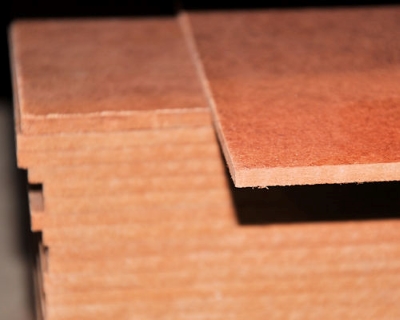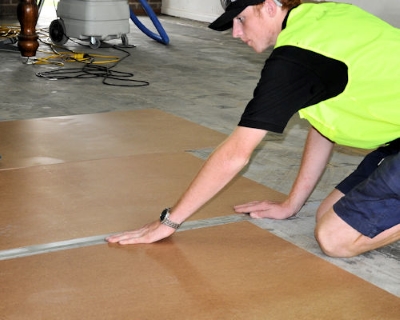Hardboard

Hardboard is made from wood fibres compressed into a sheet in a high temperature press. In principle, the bonding is achieved entirely through the ‘felting’ process of the fibres and the natural glue, or lignin, already present in the wood.
However, other chemicals can be added to improve the board’s strength and resistance to moisture, fire, insect attack and decay.
Hardboard is often referred to by the trade name ‘Masonite’, which comes from the Mason gun used to produce the wood fibres. In this process, the wood chips are steam heated in a high-pressure cylinder and then released into a cyclone, which causes the chips to explode into fibres.
Types of Hardboards

The different types of hardboard available are as follows:
- Standard hardboard is used for wall linings, door skins, cabinet backs, drawer bases, and other interior purposes.
- Underlay hardboard is treated to improve its moisture resistance, and is used under floor coverings.
- Tempered hardboard is treated to give it more strength and better resistance to moisture, so it can be used as a lining where moisture may be present.
- Exterior hardboard is treated to make it resistant to moisture and weathering, so it can be used for cladding and other outside applications.
Advantages
Hardboard can be nailed or screwed close to the edge, and does not split, chip-out or produce splinters. The board is also flexible and easy to bend into curved shapes.
Disadvantages
Being a high-density material, hardboard tends to blunt cutters more quickly than some of the competing board products.